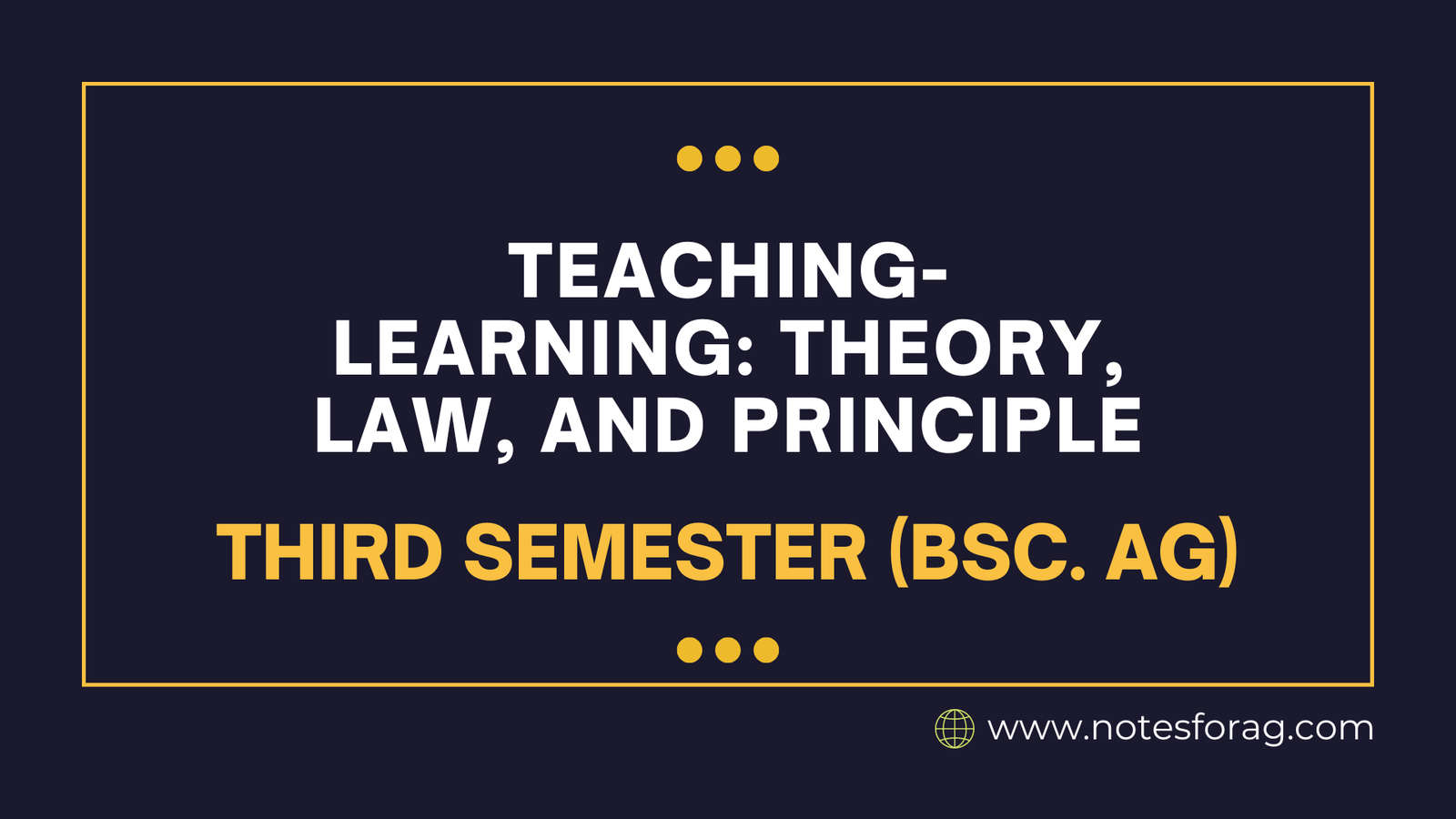Teaching-learning are guided by foundational theories, laws, and principles that shape effective educational practices. Theories such as behaviorism, cognitivism, and constructivism provide frameworks for understanding how learners acquire knowledge and skills. Laws like the Law of Effect highlight how behaviors are reinforced or discouraged based on outcomes. Principles such as active engagement, feedback, and differentiation emphasize strategies for optimizing learning and addressing diverse needs. Together, teaching-learning elements create a structured approach to fostering an effective educational environment and enhancing student learning outcomes.
Table of Contents
Introduction to Teaching-Learning Concepts
The domains of teaching-learning include a wide range of theories, laws, and principles that serve as the foundation for educational practices. Teaching is fundamentally about transmitting knowledge and skills, whereas learning is the process by which pupils internalize and understand them. The interplay of these teaching-learning processes is important to the educational experience, necessitating a thorough understanding of multiple frameworks in order to improve instruction efficacy and student engagement.
Understanding various teaching-learning frameworks is critical for educators because it provides insight into how students learn, develop abilities, and build attitudes. These frameworks, which range from behavioral theories to constructivist models, provide many viewpoints on the learning process, with each adding significant ideas for classroom application.
The importance of these teaching-learning principles goes beyond academic comprehension; they have practical implications for attaining effective education. Recognizing the concepts of differentiated instruction, for example, enables teachers to accommodate diverse learning styles and paces, ensuring that all students have an equal chance of success. Similarly, knowing the law of ready, which highlights the significance of students’ mental preparation for learning, can aid in the creation of engaging and relevant lesson plans.
Theory
1. Behaviorism:
- This theory, developed by authors such as John B. Watson and B.F. Skinner, focuses on observable behaviors and how they are influenced by stimuli and reinforcement. In the classroom, behaviorist ideas are used to develop desired behaviors and skills through rewards and punishment.
2. Cognitivism:
- Cognitivism, which was developed by thinkers such as Jean Piaget and Jerome Bruner, focuses on internal mental processes such as memory, problem solving, and perception. It proposes that teachers focus on understanding how pupils think and absorb information, supporting cognitive growth through controlled learning experiences.
3. Constructivism:
- Constructivism, which is associated with Jean Piaget and Lev Vygotsky, holds that through experiences and reflection, students actively develop their own understanding and knowledge of the world. It promotes hands-on learning, curiosity, and the value of social contact in learning.
4. Social Learning Theory:
- Albert Bandura proposed Social Learning Theory, which bridges the gap between behavioral and cognitive paradigms. Bandura created the concept of observational learning, which is when people learn by observing and copying others. This theory emphasizes the role of models, imitation, and social context in the learning process. Social Learning Theory is particularly effective for understanding social behaviors, and it has practical applications in collaborative learning environments. Nevertheless, it may not fully account for individual learning variances.
Law
1. Law of Effect:
- This theory, developed by Edward Thorndike, asserts that behaviors followed by positive outcomes are more likely to be repeated, but behaviors followed by negative consequences are less likely to occur. In education, this concept serves as the foundation for using positive reinforcement to develop desirable learning habits.
2. Law of Readiness:
- Thorndike also proposed this law, which states that learning is most successful when the student is ready and willing to learn. This means that instruction should reflect the learner’s developmental stage and preparedness to interact with new content.
3. Law of Exercise:
- This law highlights the need of practice in learning. Repeated practice and reinforcement improve learning and memory retention, emphasizing the importance of reviewing and applying teaching techniques on a regular basis.
Principle
1. Principle of Active Engagement:
- Learning is most effective when students actively participate in the process. This approach promotes interactive teaching methods, such as group discussions, hands-on activities, and problem-solving exercises, in order to build greater knowledge and retention.
2. Principle of Feedback:
- Regular, constructive feedback enables students to understand their progress and areas for development. This principle emphasizes the need of timely and personalized feedback in guiding and motivating pupils.
3. Principle of Differentiation:
- Recognizing that students’ learning needs are vary, this approach argues for training that is tailored to different learning styles, talents, and interests. It entails tailoring instructional methods and resources to individual student requirements while promoting fair learning opportunities.
By integrating these teaching-learning principles into their practices, educators can create dynamic, inclusive, and effective learning environments that cater to the diverse needs of their students.
Frequently Asked Question(FAQ)
What is the role of theory in teaching and learning?
Theories provide frameworks for understanding how students learn and how to improve teaching approaches. They assist educators in establishing educational strategies that are consistent with cognitive processes, behavioral patterns, and individual needs.
What is cognitivism and how is it applied in the classroom?
Cognitivism focuses on internal mental processes like memory and problem solving. In practice, it entails organizing lessons to promote cognitive development and using strategies such as scaffolding, idea mapping, and problem-solving activities to improve comprehension.
Related Articles

